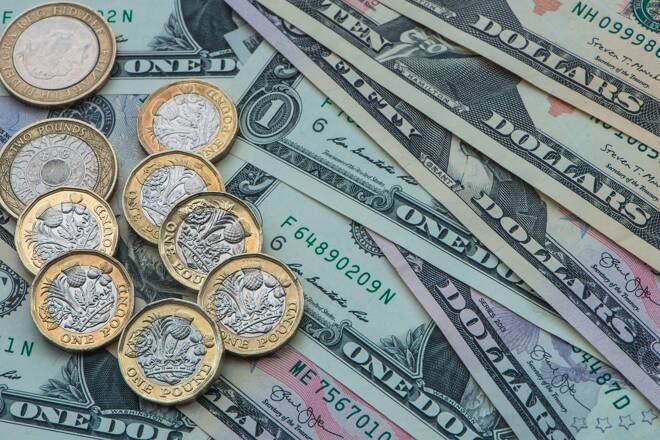Advertisement
Advertisement
GBP to USD Forecast: As Sterling Wobbles, All Eyes on Powell’s Jackson Hole Address
By:
The GBP to USD faces volatility, with the Sterling sliding amid UK economic uncertainties and hawkish US sentiments.
Highlights
- GBP/USD dipped 0.97%, navigating highs of $1.27286 before settling at $1.25989 on Thursday.
- Jackson Hole Symposium poised to amplify GBP/USD volatility with Powell’s awaited address.
- Markets eye a potentially hawkish Fed despite softer US private sector PMI numbers.
The Thursday Overview
The GBP to USD slid by 0.97% on Thursday to wrap up the day at $1.25989. A mixed start to the day saw the GBP/USD rise to an early high of $1.27286 before sliding to a low of $1.25908.
GBP Faces a Four-Day Losing Streak
Investors brushed aside UK consumer confidence figures this morning. The GfK Consumer Confidence Index increased from -30 to -25 in August. Economists forecast a rise to -29. Despite the monthly increase, consumers remain pessimistic, leaving a bearish outlook for consumer spending.
Elevated interest rates impact disposable income, weighing on consumption and supporting softer demand-driven inflationary pressures. However, wage growth remains a bugbear for the BoE, which fueled a more hawkish BoE monetary policy outlook.
UK private sector PMI numbers from Wednesday eased market bets on two further interest rate hikes before hitting the brakes. The shift in sentiment led the GBP/USD to sub-$1.26 on monetary policy divergence tilted in favor of the dollar.
There are no UK economic indicators to provide direction later today. The lack of economic indicators leaves the GBP/USD in the hands of market risk sentiment ahead of the US session.
However, investors should monitor the news wires for BoE commentary with the media. No Bank of England Monetary Policy Committee Members are on the calendar to speak today.
Fed Chair Powell to Dictate the Afternoon Session
The Jackson Hole Symposium and Fed Chair Powell will take center stage this afternoon. We expect GBP/USD volatility before, during, and after the Fed Chair Powell speech.
Despite the weaker-than-expected US private sector PMI numbers, the markets are betting on a hawkish Fed Chair. Tight labor market conditions, wage growth, and sticky inflation suggest a higher-for-longer interest rate environment.
The talk of a final interest rate hike to tame wage growth and inflation would pressure the GBP/USD. However, considering expectations of a more hawkish outlook, we expect more sensitivity to a dovish Fed outlook.
US economic indicators will play second fiddle to the Fed Chair Powell speech. Finalized Michigan Consumer Sentiment numbers for August will likely have a limited impact on the GBP to USD pairing.
According to preliminary numbers, the Michigan Consumer Sentiment Index slipped from 71.6 to 71.2 in August.
GBP to USD Price Action
Daily Chart
The Daily Chart showed the GBP to USD above the $1.2520 – $1.2440 support band. Looking at the EMAs, the GBP to USD remained below the 50-day EMA while holding above the 200-day EMA, sending bearish near-term but bullish longer-term price signals.
Looking at the 14-Daily RSI, 33.54 reflects a bearish sentiment. The RSI signals a fall through the upper level of the $1.2520 – $1.2440 support band to bring sub-$1.25 into view. However, a return to $1.26 would give the bulls a run at the 50-day EMA.
4-Hourly Chart
Looking at the 4-Hourly Chart, the GBP to USD holds above the $1.2520 – $1.2440 support band. After the Thursday loss, the GBP to USD fell further back from the 50-day and 200-day EMAs, sending bearish near and longer-term price signals.
The 14-4H RSI reading of 28.92 showed the GBP to USD in oversold territory, with selling pressure outweighing buying pressure. Significantly, the RSI aligns with the EMAs, signaling a return to sub-$1.25. However, a GBP/USD return to $1.26 would give the bulls a run at the 50-day EMA.
About the Author
Bob Masonauthor
With over 28 years of experience in the financial industry, Bob has worked with various global rating agencies and multinational banks. Currently he is covering currencies, commodities, alternative asset classes and global equities, focusing mostly on European and Asian markets.
Advertisement
